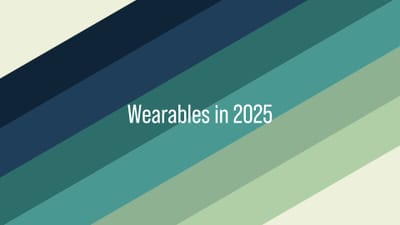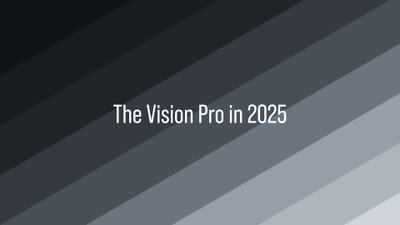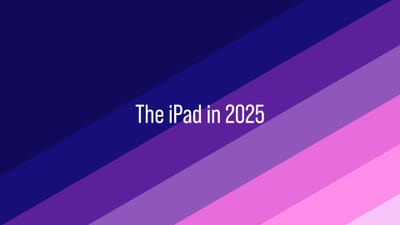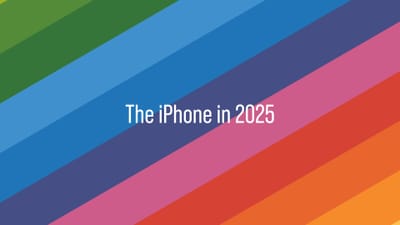iPhone 17 Pro Review
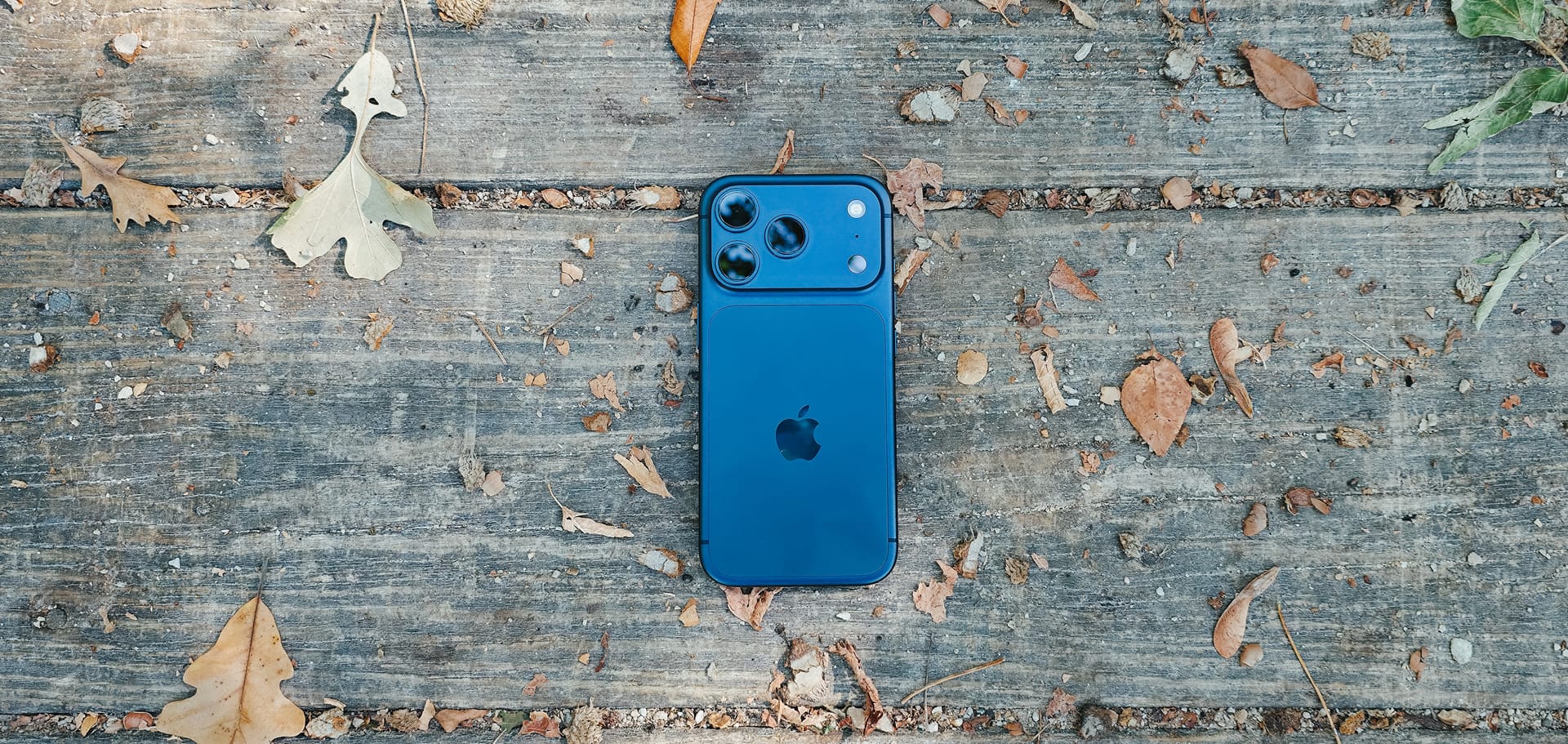
Last year I said smartphones were in their laptop era. This made sense at the time as the iPhone 16 Pro was one of the most iterative iPhone updates we've ever had. 2025's iPhone 17 Pro is a more significant update, especially if physical design is your passion, but I think the concept still holds. This is not a massive update over the 16 Pro, and as has been true for many years, there's likely no reason for most people to upgrade from last year's phone, or even 2 years ago's phone if they're still happy with it. Plenty of people (like myself) do upgrade every year because they enjoy phones, and that's cool too. This review recognizes that most people won't upgrade every year, but if you are curious about the latest iPhone 17 Pro, this review will give you an idea for what you're getting compared to last year's flagship.
Design

When the first leaks of this phone came out early this year, it looked pretty rough. The wide camera bump looked very weird, but this is a good example of why you should wait until you see the actual unit to judge how it looks. The iPhone 17 Pro looks very nice in person, the "plateau" is actually very good, and the new material makes it very comfortable to hold without a case.
A quick note on the colors available, I originally went with orange, and while I think that color looks really cool, it immediately hit me that it wasn't the color for me. It felt like I was shouting "I HAVE THE NEW IPHONE LOOK AT ME," so I swapped it a day later with the blue, which also looks sick, but in a more understated, less “LOOK AT ME” way. I also looked at the silver model in the Apple Store and it's great too. I think it's the best color lineup the Pro phones have ever had.
An added benefit of the wide camera bump is that the phone wobbles less when placed flat on a surface than any other iPhone in years (not counting the 16e). In fact, when using a case, there's literally zero wobble, which is a lovely quality of life update.
The low-key killer feature is the added rounding of the corners of the phone. I disliked the iPhone 12-14 Pro generation of phones, and I said so from day one, because they had sharp edges that were physically uncomfortable to hold. The iPhone 15 and 16 Pro were much better, and the 17 Pro goes further, achieving what I think is a really good balance. Add onto this the fact that aluminum is a softer metal than titanium and the phone just feels a bit more gentle in the hand in a way I like a lot.
I like the two-tone back with the mix of metal and glass. We'll talk more about how this stands up to scratches in a later section, but according to Apple, this glass is made from the same glass that was used on the front display of the iPhone 16 Pro, which is more resistant to shattering than the back glass on older iPhones, but could maybe be more prone to scratching.
Finally, I just wanted to comment on the structure of this phone, which is meaningfully different than the previous phones. The iPhone 15 and 16 Pro had titanium rails around the sides of the phone, but the phones were basically glass all over. Despite the titanium hype, I'd say those were glass phones. The 17 Pro doesn't just swap out the titanium rails and use aluminum instead, it's a full redesign of the phone case. This is a metal phone in a way we haven't seen since the iPhone 7 back in 2016.
All in all, this is the most utilitarian design we've ever had on the pro phones, and I dig it overall. I think the iPhone 15/16 Pro design is still more beautiful, but novelty is the spice of life, and I appreciate that we've got something new that looks cool in its own ways.
Thickness

Related to design, I wanted to quickly hit on the phone's thickness. There is always a shock from people on social media and reviewers that Apple made the phone a bit thicker "for once" as if Apple doesn't regularly make phones slightly thicker than the one that came before. Above you can see the thickness of the best phone in Apple's lineup each year (smaller model when there were two sizes), which does show a significant drop over the first 8 iterations, but then has clearly trended up for the last 11 years.

Measuring the change in percent from the model before, you actually see that since the iPhone 6, only once with the iPhone 12 Pro have we gotten a high-end iPhone that was thinner than the one that came before. So the next time you see someone say, "wow, Apple finally realized we don't want thinner phones," remind them that this has been the case 10 of the last 11 years and they're not saying anything novel.
For fun, let's add the iPhone Air to this chart to get an idea for how that looks compared to the rest of the iPhone history.

That's 35% thinner than the iPhone 17 Pro, and 18% thinner than the previous thinnest iPhone ever, the iPhone 6. This review isn't about the Air, but it's always fun to play with charts.
Scratchgate
There's always a "gate" of some sort with iPhones, and this year it's scratchgate. Early impressions are that the new Pro phones scratch more easily than the previous models. I'm not going to purposely scratch my phone to see how it stands up, but JerryRigEverything has made a career out of doing this, and his impressions are that the phones show some residue, but generally it takes quite a bit to scratch these phones for real.
Given north of 90% of people use a case on their phone, this is going to be a non-issue even if there is a problem, but as someone who goes without a case about half the time myself, it's something I'll keep an eye on.
I will say that due to the new design, I don't personally have as much of a desire to keep this pristine. The iPhone has always tried to be as pretty as possible, and this is the first time they’ve gone with a more rugged look. That’s not to say it looks bad, it’s just to say if the iPhone Air exists for those who want a jewelry look for their phone, the Pro is for those who want it to feel more like a nice, rugged tool.
Performance
I'll be very brief here and say that of course the new iPhone chip is fast, with the A19 Pro zipping through anything I throw at it. I did find that the transcription performance was radically improved over the A18 Pro, and nearly matched an M4 Pro which is wild.
I also have a secret in my Quick Reviews app that is technically a benchmark that measures CPU performance. I run a random name picker (Matt, Niléane, and Chris, of course) that renders a Swift UI chart and iterates however many times I want. In this test, I had it make 100,000 picks, which took a few minutes of each phone going at full tilt. Here are the results (of course Niléane won both 😂):

The iPhone 17 Pro was able to randomly select and update the chart UI 542 times per second, and the 16 Pro Max managed 405 per second. That makes the 17 Pro 34% faster at this test, which is nothing to sneeze at.
The other issue we all know about with the 15/16 Pro line was heat, which came through on a pretty regular basis. The 15 Pro was the worst here, and I found the 16 Pro was better, but didn't get rid of the issue entirely. Early impressions of the 17 Pro are that heat is a non-issue, but I'll be monitoring this as the year goes on in case there are situations where it actually does heat up.
The display
There's not much to say here, as the 17 Pro has the exact same display as the 16 Pro in almost every way. The resolution is the same, the physical size is the same, and the max brightness is the same.
But there are 2 changes I know of. First, Apple has added a new anti-reflective coating to the screen, which does seem slightly better than the 16 Pro's mirror-like display, but it didn't give me the "oh damn!" reaction I get from the Samsung Galaxy S25 Ultra. More to do here, and I hope Apple just does what Samsung does.
The other change is a setting in the Accessibility > Display & Text Size settings for "display pulse smoothing (PWM)", which is a setting that changes how the OLED drops its brightness to very low levels, which can be more pleasing to the eye for some people, but I've tried to see this and I guess I'm just not affected by this as I can't tell the difference.
The cameras

I don't have the energy to do full camera comparisons anymore, and I don't think they're particularly helpful in the way they used to be, but there are a few things I wanted to say about the camera system updates.
First, I've given Apple a hard time for calling their 2x and 8x "lenses" "optical-quality zoom" because they're just crops in on the sensor. I'd like to amend that here and say that while I still think it's a bit cheeky, I don't disagree with it. Some will say it's just a digital crop as if you pinched to zoom in on a photo and stretched the pixels out. That's not what's happening here.
By default, the iPhone camera takes 24MP images from a 48MP sensor. For the first time ever, this is consistent across all cameras on the iPhone 17 Pro. Basically, when shooting photos at 0.5x, 1x, or 4x, the full sensor is being captured and it's shrinking the final output image into a 4,284 x 5,712 final image.

However, when you zoom into the 2x or 8x "lenses" in the app, the center of the frame is captured, no stretching is performed, and those pixels are output in the final file.

What's interesting, though, and what I haven't seen in other reviews is that there actually is digital zoom and image stretching happening, but not at the zoom levels you may expect.
See, if you take a 4x photo with the 4x telephoto lens, you get a 24MP image output, which is aligned with our first image above showing the 48MP image binned down to 24MP. So far so good. What do you think the output is at 5x? It still outputs a 24MP image at 5x, which makes sense as we're cropping in on the sensor, but there's still more than 24MP in the middle, so we're all good.
What about 7.9x zoom? That's cropping in on about 12.1MP in the middle of the sensor, so what do you think that outputs? You may be surprised to know that outputs a 24MP image as well.

I've done a couple comparison photos at 7.9x and 8x to see if there's a difference besides the resolution, and I'm hard pressed to find any difference at all, it seems like the processing and details are the same in either case, Apple just stretches the 7.9x one out to fill a 24MP area. Heres an unexciting shot out my office window at 7.9x 24MP.

And here's the same thing at 8x 12MP.

If you can tell the difference, you've got better eyes than me.
Ultimately, while you're not getting a 24MP output image like you do at other zoom levels, I actually think its fair to say the 2x and 8x zooms are indeed "optical-quality", since while they are crops in on the sensor, they are not digital zooms like we have thought of in the past. If anything, the digital zooms happen in the weird in between range as we see above. This isn't a big deal or anything, just a bit of trivia I found interesting.
Okay, moving onto other camera stuff.
- The main and ultra-wide cameras seem the exact same as last year, and the results are indistinguishable to me, although I haven't gone deep on this. The iPhone continues to reliably take high-quality photos for me.
- The 4x telephoto lens is much better than last year's 5x lens. I went deeper on this in another article, but the gist is that results are better in most cases, similar in some case, and way better in lower light situations. The larger sensor in this telephoto lens allows it to be used in more situations and delivers better results.
- The new selfie camera is absolutely awesome. Being able to take landscape selfies with my phone held like normal is breaking my muscle memory, but I mean that in the best way possible. Overall quality is pretty similar in my comparison shots, with a slight edge maybe going to the newer phone.
- Dual-capture is kinda cool, but I'm not sure I'm the target market for this. A couple things to note are that the picture-in-picture (PiP) is baked into the file, so there's no editing afterwards. You can, however, move your face around the frame as the video is recorded if you need to get out of the way, and the PiP has a strong motion blur as you move it around. Also, while you can capture at 4k in this mode, you're capped to 30fps. Dropping the capture resolution to 1080p retains that 30fps cap.
- ProRes RAW and Genlock are cool features for professionals, although my use will be limited. Genlock ain't for me, but I do intend to use this phone more as a production camera in my YouTube productions, and I'm going to enjoy the flexibility ProRes gives me. The jury's still out if I'll use ProRes RAW, which requires using the Final Cut Camera or Blackmagic apps and plugging in an external hard drive.
Battery
Battery life is a really tough thing to comment on in reviews. Batteries are fickle things that vary a bit and the first few days with a phone are borderline irrelevant to how a battery will perform long term. Also, one person's "this phone has great battery life" could be another person's "I need to charge this phone at lunch" due to different use cases. As such, I'm going to go quickly here and share my experience so far, what Apple says to expect, and what others have found.
I'm coming from the iPhone 16 Pro Max, although I did use the smaller 16 Pro for about 5 months before switching to the Max, so I have experience with both. I'm a pretty heavy phone user, and the 16 Pro was barely good enough for me to get through every day without running out of battery, although I often got to 20% by the end of the day. The 16 Pro Max achieved what I've always loved, which was having what I consider "infinite" battery life, which is basically enough to get through any normal day without ever thinking about my battery. Thus far, the 17 Pro feels like it sits between the 16 Pro versions. It's definitely better so far than the 16 Pro, but I don't feel like I'm getting quite as much as I was getting from the 16 Pro Max.
According to Apple, I should be getting the same battery on the 17 Pro as I did on the 16 Pro Max, each getting 33 hours of on-device local video, and that may be true in that specific test, but I don’t just watch downloaded video all day, so I’m not totally convinced that test is super relevant to me more than as a simple data point. In the real world, my phone is in standby more than its screen is on, I’m usually at home with a good WiFi and poor cellular connection, and I’m opening and closing apps all the time as I check social media, browse the web, and do other menial tasks that just need to get done.
By a similar vein, YouTubers try to do more representative tests and I find these interesting as well. Both Mrwhosetheboss and The Tech Chap found the 17 Pro and the 16 Pro Max lasted almost exactly the same time, and that was on the European version, which has less physical battery capacity than the US model, so maybe I'll start to see the difference as I give the phone more time to settle in.
As a quick final note on battery, MagSafe charging got a slight bump to 25W from 22W on the previous model, and wired charging is exactly the same unless you get Apple's new 40W charging brick, which should bring you from 0% to 50% battery in 20 minutes. If you've got any other charger 20W or more, you'll get the same 30 minutes that last year's phone got.
Regardless of the specifics, I'd say I'm personally happy enough with the battery performance of the regular Pro to not have that gnawing feeling I should have gone with the Max this year.
The little stuff
I don't have much more to say here, so let's hit the tiny stuff I think we have of note.
The 17 Pros bring Bluetooth version 6 rather than 5.3 which the previous 3 years of iPhones have used. My casual understanding is that the biggest feature in version 6 is better positioning between Bluetooth 6 devices, much in the way Find My has done before. There's also lower latency, although I'm not sure what deivces support this. For reference, the brand new AirPods Pro 3 are still on version 5.3 and have the same H2 chip, so I don't think they're getting any benefit from this.
I'm pleased that the Pro phones start at 256GB this year, although I do wish they actually gave you more storage at the same price rather than doing what they did with the Pro Max last year and simply remove the 128GB model from the lineup, making the starting price $100 more than before. This isn't a review of the normal 17, but they did it right there with 256GB base storage at the same $799 price point they had for last year's 128GB model. Although considering the iPhone Air costs $999 for its 256GB model, and that phone already feels like it’s targeting a tiny sliver of the market, that slice would get even smaller if the Pro was the same price for so much more value.
Final thoughts
I'm quite happy with this new phone, and I'm glad I have it. This is in stark comparison to last year's iPhone 16 Pro, which felt like no upgrade at all with the exception of a fiddly camera button which I eventually came to appreciate (as a launcher and nothing else). This phone immediately felt fresh, which is always a good feeling and makes you feel like you spent money on something actually different from what you had before.
The performance uplift isn't something I was clamoring for, but it's very welcome, especially since it seems it has not come at the cost of overheating, but I need to spend some more time using this phone in the blaring summer heat to really know how much better it is.
The battery makes me generally happy, the screen continues to be very good even if I'm spoiled by the S25 Ultra's, and the new telephoto lens is a genuine upgrade that I'm happy to have in my pocket. This isn't a revolution or anything, but it's a quite good iPhone that I think most people will be happy with.
